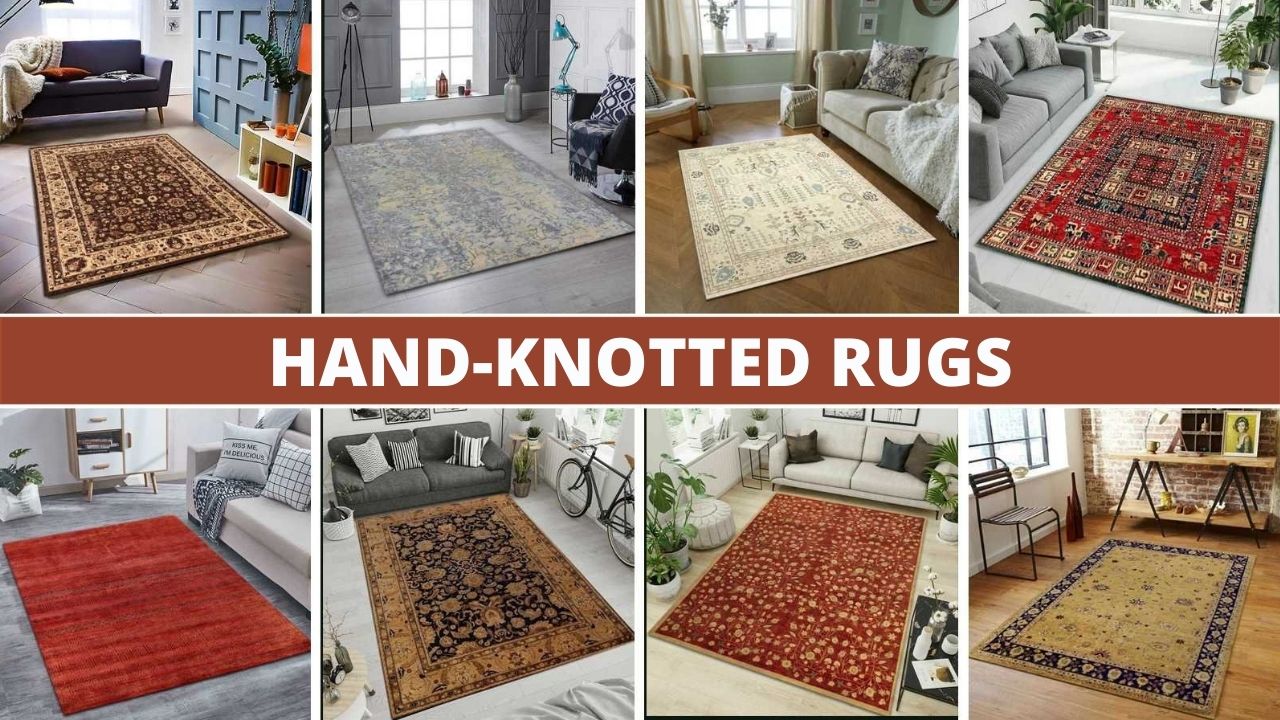Let’s Review
Hand-knotted Indian rugs are curated intricately on a specially designed loom and are knotted by hand. The formation of hand-knotted rugs is a rather ancient art. The size of the loom is based on the size of the rug carpet and the weaving is carefully done from top to bottom.
The craftsmen insert the knots into the formation of the rug and they are tied by hand. Hand-knotted rugs are available in various materials such as cotton, wool, jute, and silk, among other natural materials.
Sometimes, silk is used in wool rugs for the highlights or outlines of the pattern in order to compliment the design. These state-of-the-art pieces can last for years if properly maintained. They are known for their admirable beauty, flawless durability, and fine craftsmanship technique which is why they deserve a special place in your home.
In this article, we, at Rugs by India, will introduce you to all that you need to know about hand-knotted rugs. Read further to determine why these gorgeous heirloom pieces make the perfect addition to your home decor.
Rugs Care: Why Toddlers Can Play on Hand-Knotted Rugs?
What Exactly Are Hand-knotted Indian Rugs?
Hand-knotted Indian rugs are made by using a traditional hand-knotting technique. The origin of this ancient method of making hand-knotted rugs is Central Asia which goes back to at least a thousand years ago. Most of these exquisite, traditional pieces make use of this weaving technique and some infamous types of hand-knotted rugs are Persian rugs, Kashmir rugs as well as Oriental rugs.
The process of creating a hand-knotted rug is pretty labor-intensive and requires flawless skills. It calls for a unique weaving technique in which thousands of knots are embedded and tied individually to the foundation of the rug. These knots curate the pile of the rug and the process of weaving is traditionally done from the bottom going up.
Hand-Knotted Rugs Can Be Woven With Silk/Wool
Hand-knotted rugs are never woven using synthetic materials such as nylon, polypropylene, polyester, or acrylic. These types of rugs are curated only by using pure materials. Silk hand-knotted rugs that are woven from silk are spectacularly luxurious. Since silk is a rather expensive material, silk hand-knotted rugs are priced higher.
Alternative to traditional silk, Bamboo silk is more environmentally friendly and more long-lasting the naturally produced silk.
Wool rugs are also an excellent choice as they are woven using both- wool as well as silk. As you may know already, wool is anti-bacterial, hypo-allergenic, and a renewable resource.
Types Of Knots
There are several types of knots that are used in order to curate Traditional handmade Indian Rugs as the techniques differ depending on the origin or the region of the rug. These techniques have been carried out for generations, thereby leading to a meticulously perfected skill.
The different types of knots are a Turkish knot, a Persian knot, and an Oriental knot. The Persian knot is the most popular hand-knotting technique. It is a type of asymmetrical knot that is used to create rug carpets with extremely intricate design details.
Hand-knotted rugs are also known as ‘flat weaves’ because of their flat texture. In a flat-weave rug, there is no height virtually. Dhurrie, kilim, soumak, and braid are some different types of flatweave rugs. If you opt for a flat-weave rug, you must definitely put a rug pad beneath it in order to help it stay in place and provide more cushioning to the rug.
What Makes A Hand-Made Rug Worthwhile?
Hand-made rugs get valuable depending on several factors such as the dyes used and the quality of the yarns, the knot count, kind, design, age, and of course, whether or not a rug is hand-made. Typically, hand-knotted rugs cost more, however, the life span of these beautiful pieces is greater, thereby being of value for your money.
What To Look For When Buying A Hand-Knotted Rug
-
Thickness
By thickness, we mean the height of the pile in your hand-knotted rug. The higher the pile is, the more rug you get to wear through before it wears out. Thickness plays an essential role when it comes to the life span of a rug.
-
Knot Count
The knot count is basically the number of knots per square inch that is tied to the rug. The number of knot counts determines the time and effort put into curating a rug. There are usually 100-250 knots per square inch in an average rug. If there are more than 300 knots per inch, then the rug is considered to be of the finest quality.
-
Density
Density refers to how packed together the fibers of a hand-knotted rug are. If a rug is woven more densely, the fibers will support each other, thereby creating a much stronger body for your rug.
Let’s Wrap
Rugs by India offer the finest quality hand-knotted Indian rugs at pretty reasonable prices. You will find some state-of-the-art pieces in our exclusive collection of designer rugs. Browse through our new range of hand-made rugs and pick your favorite piece today. After all, it is now time to add more aesthetics and character to your home decor.
Our Top Selling Hand-Knotted Rugs:

